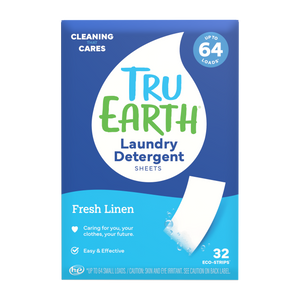When it comes to kitchen mishaps, butter spills can be particularly challenging to clean up. The slippery, greasy nature of butter makes it prone to spreading and leaving stubborn stains on your kitchen floors.
Whether you've dropped a butter dish or accidentally stepped on a buttered cracker, we've got you covered. In this guide, we will explore effective methods for getting rid of butter stains and restoring the shine to your kitchen floors. With a little know-how and some readily available household items, your floors will be butter-free and gleaming in no time.

Understanding Butter Stains
Before we jump into the cleaning methods, it's necessary to understand what we're dealing with. Butter is a fatty substance that can quickly penetrate porous surfaces like tile, linoleum, or hardwood floors.
When it's dropped or smeared, it leaves behind a greasy residue that attracts dirt and can become a slipping hazard. Acting promptly to remove butter stains is essential to prevent long-term damage to your kitchen floors.
The Tools You'll Need
Before tackling that buttery mess, gather the following tools and supplies:
- Absorbent paper towels or clean, white cloths
- A plastic scraper or spatula
- A bucket
- Warm water
- Dishwashing liquid
- Baking soda
- White vinegar
- A soft-bristle scrub brush or an old toothbrush
- Microfiber or cotton mop
- Towels or rags for drying
Now that you're prepared let's explore the step-by-step process of removing butter stains from your kitchen floors.
Step 1: Act Quickly
The key to successfully removing a butter stain is to act promptly. The longer the butter sits on your floor, the deeper it penetrates, making it more challenging to clean.
As soon as you notice the spill, grab some paper towels or clean, white cloths to blot up as much of the butter as possible. Gently press the towels onto the stain to absorb the grease. Avoid rubbing, as this can spread the butter and make the stain worse.
Step 2: Scrape Away Excess Butter
After blotting up the excess butter, use a plastic scraper or spatula to gently lift off any remaining butter from the floor's surface. Be cautious not to scratch the flooring material, especially if it's delicate.
Step 3: Create a Cleaning Solution
Fill a bucket with warm water and add a few drops of mild dishwashing liquid. Mix it gently to create a soapy solution. Dishwashing liquid is an effective degreaser that can help break down the butter residue.
Step 4: Pre-Treat the Stain
Dip a clean cloth or sponge into the soapy water mixture, then wring it out so it's damp but not soaking wet. Place the damp cloth or sponge over the butter stain and let it sit for a few minutes. This pre-treatment allows the soapy water to start breaking down the grease.
Step 5: Gently Scrub the Stain
Using a soft-bristle scrub brush or an old toothbrush, gently scrub the butter stain in a circular motion. Be patient and avoid using excessive force to prevent damaging the flooring. Continue scrubbing until the stain starts to lift.
Step 6: Rinse with Warm Water
After scrubbing, rinse the area thoroughly with clean, warm water. This step helps remove any remaining soap residue and loosened butter particles.
Step 7: Use Baking Soda Paste
For stubborn butter stains, you can create a baking soda paste. Mix baking soda with a small amount of water to form a thick paste. Apply the paste to the stain and let it sit for about 10-15 minutes. Baking soda is an excellent absorbent and can help draw out grease from the flooring.
Step 8: Scrub Again
After the baking soda paste has had time to work, use your soft-bristle scrub brush or toothbrush to gently scrub the stain once more. Continue in a circular motion, and you should see further improvement.
Step 9: Rinse and Dry
Rinse the area again with clean, warm water to remove the baking soda paste, and then thoroughly dry the floor with clean towels or rags. Make sure the floor is completely dry to prevent slipping accidents.
Step 10: Assess and Repeat If Necessary
Inspect the area to see if the butter stain has been completely removed. If there are any remnants, repeat the process until the stain is gone. Be patient and persistent, as some butter stains may require multiple treatments.
Preventing Future Butter Mishaps
Now that your kitchen floor is butter-free and clean, it's a good time to consider preventive measures:
- Place butter dishes or containers on stable surfaces to minimize the risk of spills.
- Be cautious when handling buttery items in the kitchen, and consider using trays or placemats to contain potential spills.
- Encourage family members and guests to clean up any butter spills immediately to prevent staining and slipping hazards.

Maintaining Pristine Kitchen Floors
Accidents happen, but with the right approach and a little elbow grease, you can effectively remove butter stains from your kitchen floors.
Remember to act swiftly, use gentle cleaning methods, and be patient during the process. By following these steps, you'll have your floors looking pristine and butter-free in no time, ensuring a safe and clean kitchen environment for all.

